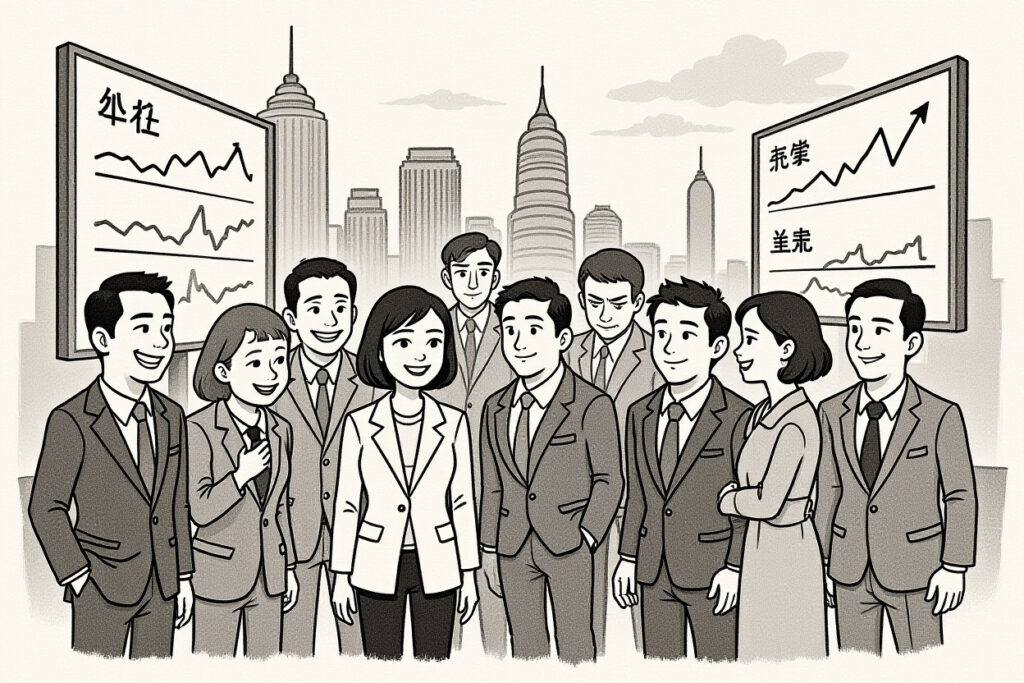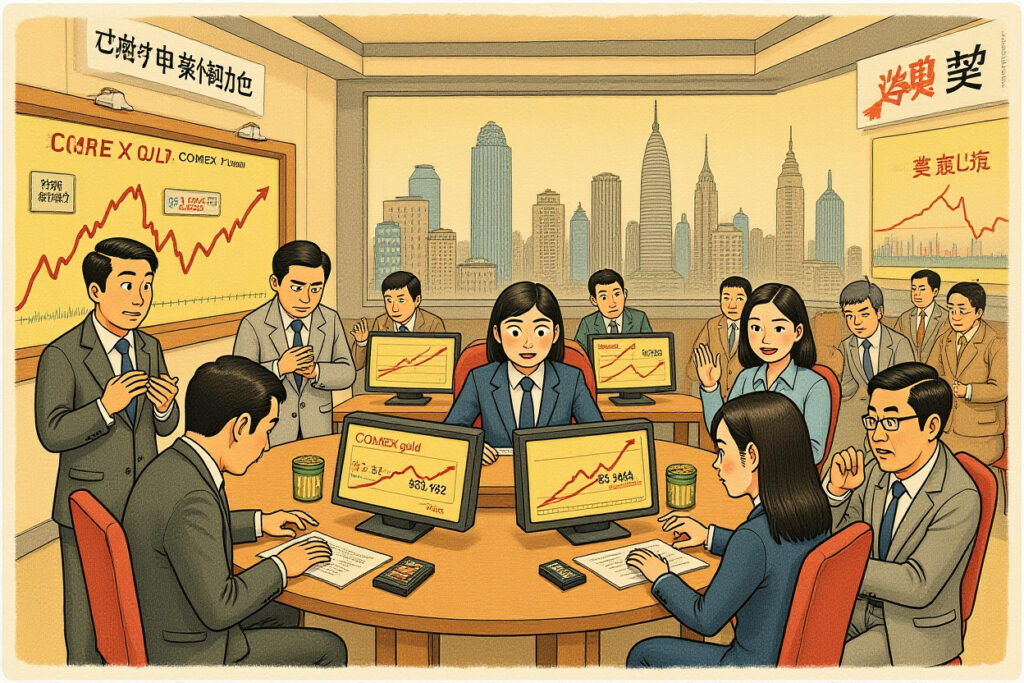Executive Summary
- Dong Shaopeng, a prominent Chinese securities commentator, asserts that a ‘slow bull market’ is already unfolding in China’s A-share market.
- He emphasizes that sustained regulatory enforcement (严打) is critical to maintaining market stability and investor confidence.
- The commentary highlights the role of policymakers in balancing market growth with risk prevention.
- International investors should monitor regulatory developments as key indicators of market direction.
- Long-term institutional capital is expected to benefit from a more standardized and transparent market environment.
China’s Equity Landscape Enters New Phase
Dong Shaopeng (董少鹏), a well-respected voice in China’s financial commentary sphere, has articulated a compelling vision for the country’s equity markets. In his recent analysis, he posits that the long-anticipated ‘slow bull market’—a gradual, sustainable upward trend—is not merely prospective but already in motion. This development carries significant implications for global institutional investors tracking Chinese securities.
The concept of a slow bull market contrasts sharply with the volatility that has often characterized China’s stock exchanges. It suggests a maturation of market mechanisms, increased participation by long-term investors, and more disciplined corporate behavior. Dong’s commentary, originally published by Phoenix Net (凤凰网), provides a timely framework for understanding current regulatory movements.
The Mechanics of China’s Slow Bull Market
Defining the ‘Slow Bull’ Phenomenon
Unlike rapid bull runs that often end in destabilizing corrections, a slow bull market is marked by measured appreciation supported by fundamental economic indicators. In China’s context, this includes:
- Steady GDP growth within government targets
- Corporate earnings growth across key sectors
- Increasing participation from domestic institutional investors
- Gradual capital market liberalization
Dong argues that these conditions have collectively created an environment where sustainable growth can occur. The slow bull market represents a departure from previous cycles dominated by retail speculation toward something more institutionalized and stable.
Regulatory Enforcement as Market Foundation
Critical to Dong’s thesis is the role of regulatory enforcement—what he terms 严打 (yán dǎ) or strict crackdowns. This refers to:
- Heightened scrutiny of insider trading and market manipulation
- Stricter enforcement of disclosure requirements
- Penalties for accounting fraud and corporate governance failures
- Oversight of margin trading and other leverage channels
According to Dong, this regulatory rigor doesn’t suppress markets but rather creates the necessary conditions for the slow bull market to flourish by building investor trust and market integrity.
Regulatory Framework Supporting Market Development
China Securities Regulatory Commission’s Evolving Approach
The 中国证券监督管理委员会 (China Securities Regulatory Commission, CSRC) has progressively refined its regulatory toolkit. Recent initiatives include:
- Enhanced cross-border monitoring capabilities
- Revised listing standards for the STAR Market and ChiNext
- Tighter controls on bond defaults and credit risks
- Improved shareholder protection mechanisms
These measures align with Dong’s assertion that regulatory enforcement provides the guardrails within which the slow bull market can develop. The CSRC’s increasingly sophisticated approach suggests recognition that market stability requires active oversight rather than passive observation.
Integration with Broader Economic Policies
Market regulation doesn’t operate in isolation but connects to broader economic objectives set by institutions like the 中国人民银行 (People’s Bank of China) and 国家金融监督管理总局 (National Financial Regulatory Administration). Key intersections include:
- Monetary policy transmission through equity markets
- Capital allocation to strategic sectors identified in Five-Year Plans
- Wealth effect considerations for consumer economy support
- Financial stability implications of market valuations
This policy integration helps explain why regulatory enforcement receives such emphasis—it serves multiple macroeconomic purposes beyond mere market oversight.
Implications for International Investors
Navigating the New Regulatory Environment
For global institutions, China’s emphasis on regulatory enforcement creates both challenges and opportunities. Key considerations include:
- Increased compliance requirements for foreign participants
- More reliable financial reporting from listed companies
- Reduced volatility from speculative trading
- Greater alignment with international governance standards
The slow bull market thesis suggests that investors prioritizing fundamental analysis over momentum trading may benefit most from this environment. Companies with strong governance and transparent operations should increasingly outperform.
Sector-Specific Opportunities
Certain sectors appear particularly well-positioned within Dong’s slow bull market framework:
- Technology companies meeting self-reliance priorities
- Green energy firms aligned with carbon neutrality goals
- Consumer brands benefiting from domestic consumption growth
- Financial institutions serving market intermediation needs
These segments likely will receive regulatory support rather than constraint, making them potential pillars of the sustained upward trend Dong anticipates.
Risks and Challenges to the Slow Bull Thesis
External Pressures and Global Dynamics
While domestic conditions may support a slow bull market, external factors could disrupt this trajectory:
- Geopolitical tensions affecting trade and investment flows
- Global monetary policy shifts impacting capital movements
- Commodity price volatility influencing input costs
- International accounting standard divergences
Dong’s analysis primarily focuses on domestic factors, but international investors must weigh these cross-border considerations carefully.
Execution Risks in Regulatory Enforcement
The effectiveness of 严打 (strict crackdowns) depends on consistent implementation. Potential pitfalls include:
- Regulatory overreach stifling legitimate market activity
- Inconsistent enforcement across regions and sectors
- Unintended consequences from poorly designed rules
- Capacity constraints within regulatory bodies
Investors should monitor whether enforcement actions achieve their intended market-stabilizing effects without creating new distortions.
Strategic Outlook for Chinese Equities
Dong Shaopeng’s slow bull market thesis presents a compelling narrative for China’s equity development. If accurate, investors may experience:
- More predictable returns based on fundamental factors
- Reduced tail risks from market manipulation and fraud
- Longer investment horizons appropriate for institutional capital
- Improved correlation patterns with global portfolios
The emphasis on regulatory enforcement suggests authorities recognize that sustainable markets require more than just economic growth—they need institutional credibility and operational integrity.
For international investors, this evolving landscape demands increased attention to regulatory developments and governance indicators. The slow bull market doesn’t mean absence of volatility, but rather volatility within a defined range and for identifiable reasons. As China’s markets continue integrating with global systems, this maturation process may create unprecedented opportunities for disciplined investors who understand the new rules of engagement.
Monitor CSRC announcements, corporate governance improvements, and institutional flow data for confirmation that the slow bull market remains on track. The journey toward market maturity continues, with regulatory enforcement providing the necessary guardrails for sustainable growth.




